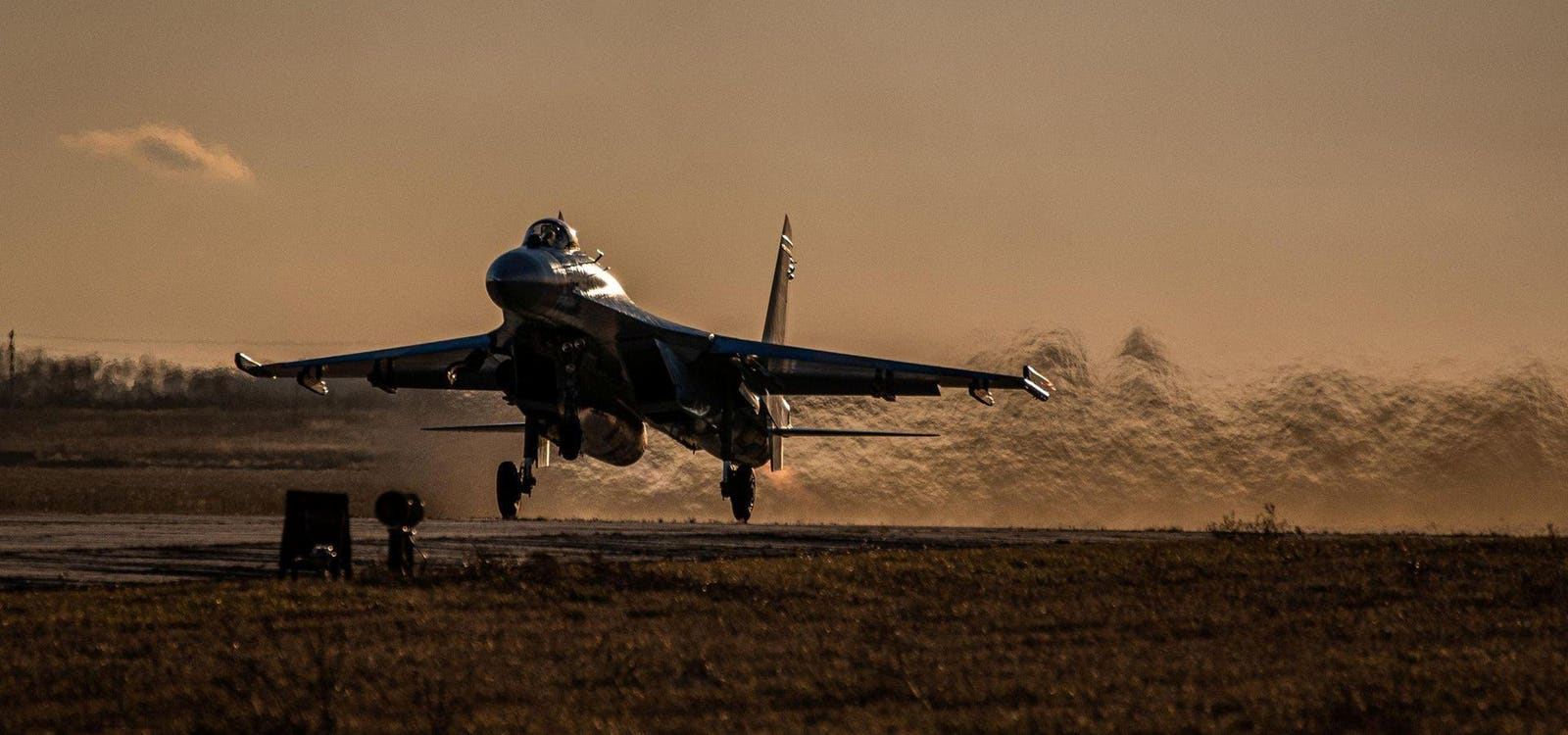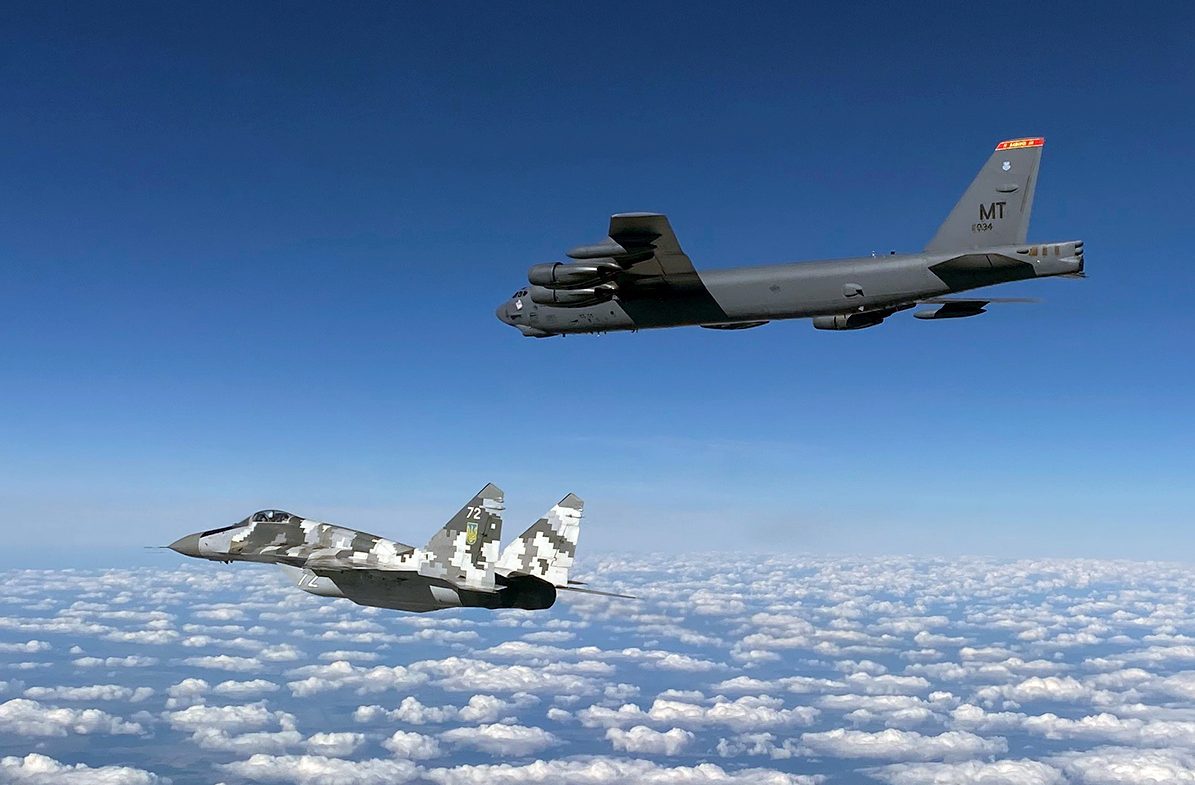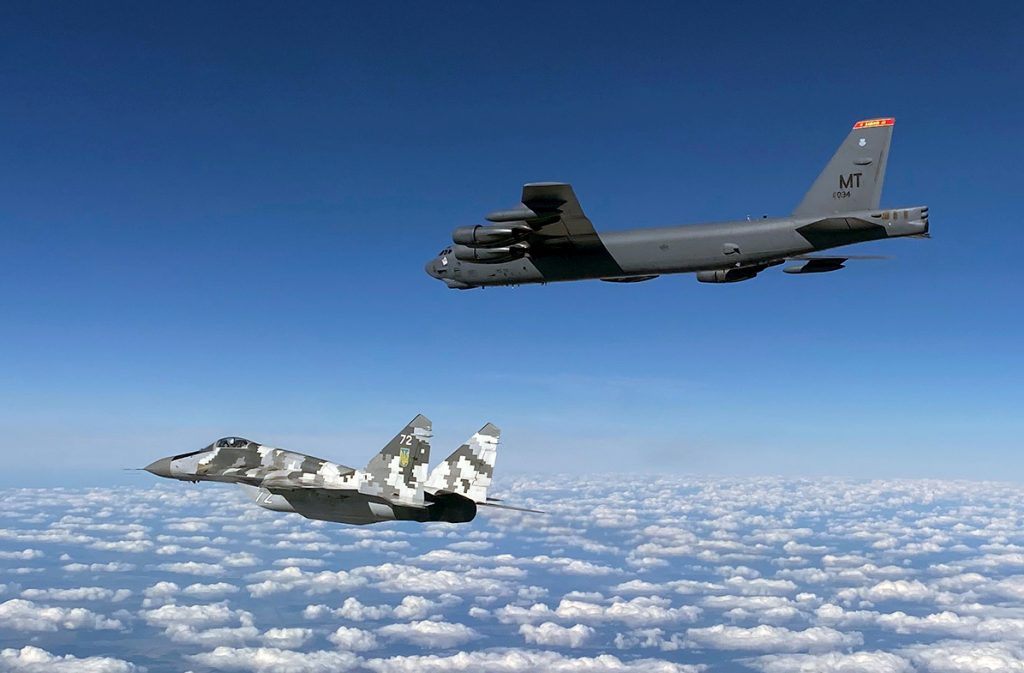UkraineAlert
April 6, 2021
Upgrading Ukraine’s Air Force could deter Russia
By Stephen Blank
Ukraine is back in the international headlines thanks to alarm over
a major Russian military build-up close to the Ukrainian border. This latest scare is a reminder that Russian aggression against Ukraine is far from over. While combat operations peaked in 2014-15, the conflict continues to simmer and remains very much unresolved.
Over the past seven years, the international community has provided Ukraine with considerable support, but this backing has yet to persuade Russia to end its hybrid campaign against Ukrainian statehood. Ukraine’s Western partners are understandably reluctant to enter into an armed confrontation with Russia, and have also been extremely cautious about providing the Ukrainian military with the means to counter the Kremlin. Nevertheless, one of the most effective deterrents to further Russian aggression may be an upgraded Ukrainian Air Force.
Following Russia’s 2014 invasion, the Ukrainian Air Force launched an improvised effort to get as many jets as possible flyable and called up maximum numbers of air force reservists in a bid to make the UAF as combat-ready as possible. They faced a range of problems caused by decades of post-Soviet neglect. These difficulties were compounded by a chronic shortage of Russian-made spare parts, resulting in massive cannibalization of grounded jets in order to get a few dozen combat ready.
Even this relatively small air force was able to inflict prohibitive losses on Russia’s hybrid army of conventional forces, mercenaries, and local collaborators. Some air strikes are reported to have killed significant numbers of Russian troops.
Moscow reacted by covertly deploying air defense systems into the occupied Donbas region of eastern Ukraine. One such system was involved in the shooting down of civilian airliner MH17 in July 2014. Many Ukrainian military aircraft were also shot down, as the Ukrainians frequently flew with broken or obsolete electronic warfare equipment.
Since the start of hostilities, the UAF has expanded its combat force by overhauling and often upgrading mothballed jets and training a new generation of airmen. This effort has been hampered by the need to acquire Russian-made spare parts that could not be reverse engineered in Ukraine, with such purchases often taking place covertly abroad. Despite these efforts and due to the heavy losses incurred in 2014, Ukraine’s Air Force is currently in a weakened state and offers limited deterrent value.
Ukraine's Air Force leadership has recently conceded that by 2030, most of the country’s fighter jets will be non-viable. Meanwhile, Moscow exploits the weakness of Ukraine's Air Force and menaces Ukraine with the threat of air attacks. Most of Russia's newest fighters have been deployed across a chain of airfields in an arc around Ukraine's borders.
Clearly, the Ukrainian Air Force is in urgent need of an upgrade. Ukraine’s public debate over how to revive the UAF has reached a consensus that Western-built jets armed with modern smart munitions are needed, along with Western air defense capabilities.
Ukraine’s best air force assets at present are two under-strength fighter brigades of around fifty Su-27 FLANKERs, equivalent to the US F-15C. Around thirty are believed to be operational. Its next best asset is a fighter brigade of smart munition-capable Su-24 FENCERs, the “Soviet F-111” and workhorse of Russia's bombing campaign in Syria. At best, around thirty of these planes are currently believed to be operational.
The largest fighter assets Ukraine has are three under-strength fighter brigades of around 80 MiG-29 FULCRUMs, equivalent to the US F-16. Finally, one brigade of the Su-25 FROGFOOT or “Soviet Warthog” is employed for ground attack.
Ukraine lacks key air defense capabilities such as Airborne Early Warning and Control, aerial refueling tankers, digital datalink terminals to network these, modern smart munitions, air launched cruise missiles, and reconnaissance and targeting pods to support these.
There are no challenges in providing Airborne Early Warning and Control, aerial refuelling tankers, datalinking equipment, cruise missiles or smart munitions, or in replacing Ukraine's lightweight MiG-29s and Su-25s. Mothballed F-16Cs, E-2C-2000 Hawkeyes and KC-135 tankers are abundant in AMARG storage. New or refurbished F-16C and European fighters could also be supplied.
The challenge is in replacing the long-range, heavy-hitting Su-27 and Su-24 fighters. The only Western alternative that can replace them is the US F-15, at least one hundred of which are needed for under-strength units. The F-15 has already been publicly proposed
by General Drozdov, Chief of Ukraine’s Air Staff.
The need to upgrade Ukraine's Air Force presents an opportunity for the Biden administration to cause Moscow some genuine pain, in both the real strategic sense and in terms of the long-running propaganda war.
The flow of US lethal and non-lethal military aid to Ukraine since 2014 has so far been helpful, but mainly of symbolic value. The US has supplied extensive training, Humvees, counter-battery radars, night vision equipment, Javelin anti-tank missiles, and Island class coastguard cutters. Plans are also in place to provide Mark VI patrol boats. Aid for the Ukrainian Air Force has been minimal, including the supply of helmets for aircrew and runway repair kits. This aid has yet to produce a truly strategic impact.
A US-funded aid or “lend-lease” package of 100 or more F-15s, six to eight E-2C-2000 Hawkeyes, and eight to 12 KC-135R tankers, along with Link-16 datalink terminals, smart munitions, cruise missiles, and suitable reconnaissance and targeting equipment would send Moscow an unambiguous message and help deter any future invasion plans.
There are many ways of implementing and funding a potential package of air defense equipment for Ukraine. The “instant capability” option is to pull mothballed F-15C/D, E-2C-2000, and KC-135R aircraft out of storage and send them to Ukraine, with downstream upgrades for the F-15s as proposed for Japan.
Alternately, the US could supply new build F-15QA or F-15EX jets to Ukraine. Smart munitions, cruise missiles such as JASSM, and other proposed items are now commodity production items exported widely to allies and could be supplied new or from existing stocks.
Reinforcing Ukraine's Air Force would be a powerful way for the Biden administration to signal that the US will no longer tolerate Russian mischief in Eastern Europe, and that there are hard and tangible long-term strategic costs Russia must bear for its malign conduct.
Stephen Blank is a Senior Fellow at the Foreign Policy Research Institute.








 . Tuo
. Tuo  "kapinalliset" on niin kehno kertomus, että huhhuh.
"kapinalliset" on niin kehno kertomus, että huhhuh.
